Nationality English Occupation religious prophet | Name Joanna Southcott | |
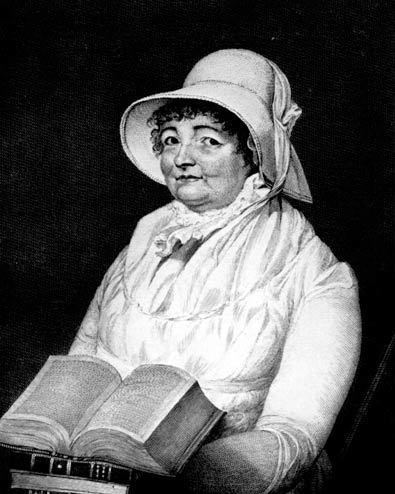 | ||
Died December 27, 1814, London, United Kingdom Books The Trial of Joanna Southcott 1916 | ||
Joanna southcott 616 part1
Joanna Southcott (or Southcote) (April 1750 – 27 December 1814), was a self-described religious prophetess. She was born at Taleford, baptised at Ottery St. Mary, and raised in the village of Gittisham in Devon, England.
Contents
- Joanna southcott 616 part1
- Buckhorn for 52x52 joanna southcott full song
- Self revelation
- The coming of the new Messiah and death
- Legacy
- Works
- References
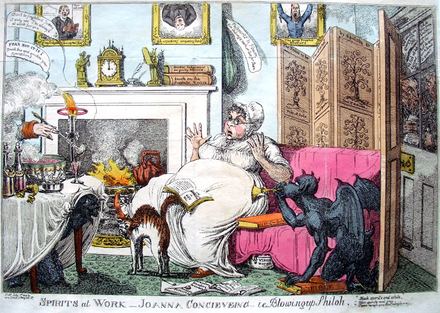
Buckhorn for 52x52 joanna southcott full song
Self-revelation
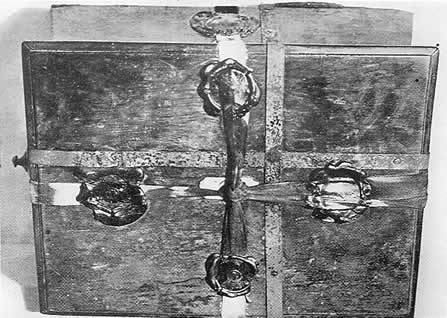
Her father was a farmer and she herself was for a considerable time a domestic servant in Exeter. She was originally of the Church of England, but about 1792, becoming persuaded that she possessed supernatural gifts, she wrote and dictated prophecies in rhyme, and then announced herself as the Woman of the Apocalypse spoken of in Revelation – in the King James Version, Revelation 12:1–6:
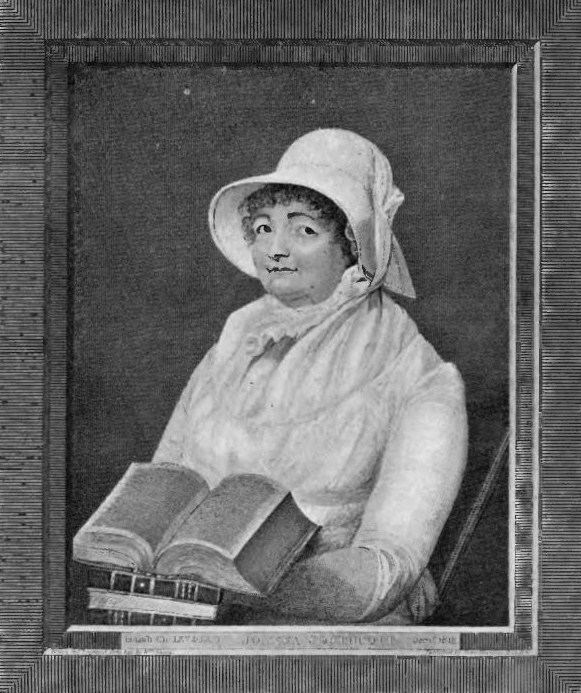
- And there appeared a great wonder in heaven; a woman clothed with the sun, and the moon under her feet, and upon her head a crown of twelve stars:
- And she being with child cried, travailing in birth, and pained to be delivered.
- And there appeared another wonder in heaven; and behold a great red dragon, having seven heads and ten horns, and seven crowns upon his heads.
- And his tail drew the third part of the stars of heaven, and did cast them to the earth: and the dragon stood before the woman which was ready to be delivered, for to devour her child as soon as it was born.
- And she brought forth a man child, who was to rule all nations with a rod of iron: and her child was caught up unto God, and to his throne.
- And the woman fled into the wilderness, where she hath a place prepared of God, that they should feed her there a thousand two hundred and threescore days.
The coming of the new Messiah, and death
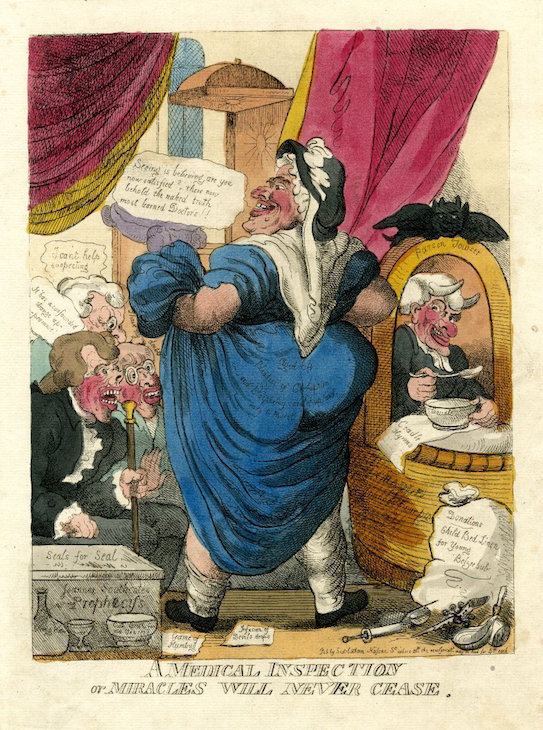
Coming to London at the request of William Sharp (1749–1824), the engraver, Southcott began selling paper "seals of the Lord" at prices varying from twelve shillings to a guinea. The seals were purported to ensure the holder's place among the 144,000 people who would be elected to eternal life.
At the age of 64 Southcott affirmed that she was pregnant and would be delivered of the new Messiah, the Shiloh of Genesis 49:10. The date of 19 October 1814 was that fixed for the birth, but Shiloh failed to appear, and it was given out that she was in a trance.
She died not long after. The official date of death is given as 27 December 1814; however, it is likely that she died the previous day, as her followers retained her body for some time, in the belief that she would be raised from the dead. They agreed to its burial only after it began to decay.
Legacy
The movement did not end with Southcott's death in 1814. Her followers, referred to as Southcottians, are said to have numbered over 100,000, but declined greatly by the end of the nineteenth century. In 1844 a lady named Ann Essam left large sums of money for "printing, publishing and propagation of the sacred writings of Joanna Southcott". The will was disputed in 1861 by her niece on grounds including that the writings were blasphemous and that the bequest was contrary to the Statute of Mortmain: the Court of Chancery refused to find the writings blasphemous but held the bequest was contrary to the Statute of Mortmain and therefore void.
Southcott left a sealed wooden box of prophecies, usually known as Joanna Southcott's Box, with the instruction that it be opened only at a time of national crisis, and then only in the presence of all 24 bishops of the Church of England (there were only 24 at the time), who were to spend a fixed period of time beforehand studying Southcott's prophecies. Attempts were made to persuade the episcopate to open it during the Crimean War and again during the First World War. In 1927, the psychic researcher Harry Price claimed that he had come into possession of the box and arranged to have it opened in the presence of one reluctant prelate (the Bishop of Grantham, not a diocesan bishop but a suffragan of the diocese of Lincoln): it was found to contain only a few oddments and unimportant papers, among them a lottery ticket and a horse-pistol. Price's claims to have had the true box have been disputed by historians and by followers of Southcott.
Southcottians claimed that the box opened in 1927 was not the authentic one and continued to press for the true box to be opened. An advertising campaign on billboards and in British national newspapers such as the Sunday Express was run in the 1960s and 1970s by one prominent group of Southcottians, the Panacea Society in Bedford (formed 1920), to try to persuade the twenty-four bishops to have the box opened. Their slogan was: "War, disease, crime and banditry, distress of nations and perplexity will increase until the Bishops open Joanna Southcott's box." According to the Panacea Society, this true box is in their possession at a secret location for safekeeping, with its whereabouts only be disclosed only when a meeting with the bishops has been arranged. Southcott prophesied that the Day of Judgement would come in the year 2004, and her followers stated that if the contents of the box had not been studied beforehand, the world would have had to meet it unprepared.
The efforts of the Society have so far been unsuccessful; Church of England officials have commented that for them to take part in the opening would be to unnecessarily arouse public interest in the affair.
Charles Dickens refers to Mrs. Southcott in his description of the year 1775 at the beginning of A Tale of Two Cities.
Works
Among her sixty publications may be mentioned:
